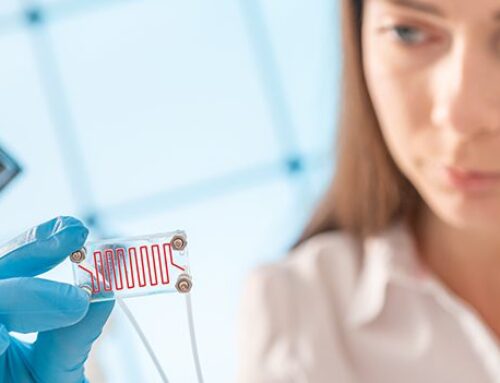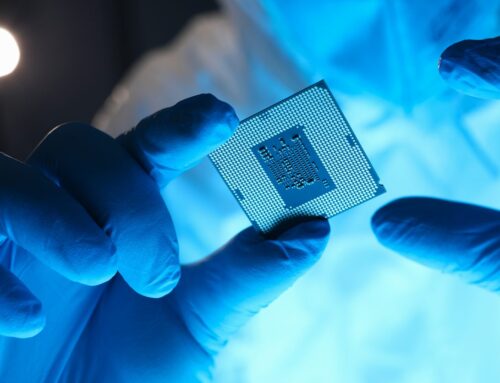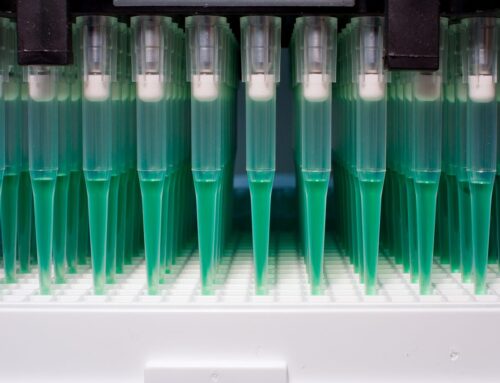In the spring of 2020, COVID-19 swept through the world, demanding that the medical and healthcare industries rise to the occasion to face a global pandemic—and rise they did. Not only were significant strides made to develop effective COVID vaccines, but to develop effective rapid testing methods as well. In the latter case, microfluidic technology proved instrumental for many methods of rapid, accurate testing for COVID antigens or antibodies—and the strides made throughout the pandemic will continue to drive new advances and new opportunities in the world of point-of-care diagnostics.
In the aftermath of pandemic lockdowns, rapid point-of-care tests for COVID infection enabled people to mitigate risks of infection and act in the best interests of their health and their community’s health while working, spending time with loved ones, and going about their daily business.
COVID testing is only one example, though, of the wide-ranging utility of point-of-care devices, which have made complex and lifesaving medical diagnostics far more easily accessible than ever before, from urban centers in the first world to remote rural areas in the third world. It impacts us all.
The Essential Role of Microfluidics in Point-of-Care Diagnostics
A point-of-care device, or POC device, requires an efficient means of combining multiple laboratory diagnostic and assay tools onto a single compact, often hand-held device—in other words, a lab on a chip (LOC). Through the use of microfluidics, minute amounts of fluid, such as a patient’s blood or saliva sample, can be manipulated and run through complex assays within a POC device to deliver diagnostic results quickly and without the need for cumbersome laboratory technology.
From rapid testing for blood glucose levels, cholesterol levels, and pregnancy to detection of infectious diseases and blood gas analysis for patients with severe and life-threatening respiratory or metabolic disturbances, point-of-care devices play a vital role in helping patients receive the care they need quickly enough that their treatment can do the most good.
Near-Term Opportunities in the Point-of-Care Diagnostics Market
The Centers for Disease Control finds point-of-care tests to be essential to solving current and future challenges in healthcare, including inadequate healthcare for rural areas. With the help of POC devices, clinics can improve diagnostic throughput, treating more patients faster through rapid diagnostic tests and building a more resilient multi-tiered diagnostic infrastructure.
Providing Faster, More Effective Treatment of Respiratory Illness
As the CDC points out, the COVID-19 pandemic exposed significant shortcomings in the US healthcare infrastructure, which microfluidics in point-of-care diagnostics can help remedy. In the near-term, point-of-care devices can ensure that respiratory illnesses such as influenza can be detected quickly after first onset of symptoms, while antivirals and other treatments are at their most effective.
Enabling Decentralized, Community-Based Healthcare
Like the CDC’s report, Healthcare Transformers also points out the shortcomings in the world’s healthcare infrastructure that were exposed by the COVID pandemic—shortcomings that advances in microfluidics and point-of-care diagnostics are primed to shore up.
Shifts in population demographics, social interaction, and general transmission awareness are all rapidly changing how we interact with our healthcare infrastructure. Decentralizing our healthcare infrastructure is essential to prevent our healthcare facilities from being stretched to their limits by patients seeking access to the potentially lifesaving diagnostic services they need. From pop-up testing centers to home sampling service kits, POC devices will help patients stay healthy in the face of:
- Future epidemics and pandemics, urbanization, and other factors that provide new avenues for new diseases to spread
- Managing multiple, chronic medical conditions as demographics shift and older individuals become a greater proportion of the population
- Lack of traditional healthcare resources in poor and rural areas
Decentralized, community-based medical facilities, empowered by advances in point-of-care diagnostics, can provide dynamic, resilient healthcare infrastructure that reduces strain on healthcare professionals while also decreasing healthcare spending by reducing unnecessary hospital admissions and activity.
Making Cancer Screening More Effective
According to the American Cancer Society, as of 2022, roughly 1,670 people on average die from cancer in the US every day, making it the second most common cause of death behind heart disease.
Utilizing new innovations in microfluidics, point-of-care diagnostics can provide better and earlier cancer detection that could save more patients’ lives. The sooner cancer screening detects the early warning signs of cancer, the sooner a patient can start treatment while the cancer is easiest to treat.
Microfluidic diagnostic devices miniaturize the complex diagnostic tools used in cancer screening, cutting down on the need for expensive, time-consuming screening processes that must be done in a laboratory by well-trained personnel. Tiny microfluidic systems, such as pumps, mixers, valves, and filters, laid out on a single chip, can automate entire diagnostic protocols.
Microfluidics in point-of-care devices can make cancer screening systems smaller and more portable, easier to handle by less-trained staff, more cost-efficient and energy-efficient, and more sensitive and reliable. Detecting early warning signs of cancer faster, more easily, and more cost-effectively can prevent countless deaths from cancer.
Challenges in the Point-of-Care Diagnostics Market
With opportunities, though, come challenges. Developing new microfluidic diagnostic devices to revolutionize the treatment of respiratory illnesses, access to medical care, and early cancer detection means solving problems new and old alike in microfluidic chip design and manufacture.
Integration and Complexity
A microfluidic chip consists of several large-scale laboratory functions packed into an extremely complex and portable platform and must prepare, mix, separate, and detect minuscule samples while remaining easy to use.
Integrating the precise fluidic pathways, valves, pumps, and sensors required for your POC device’s unique application means balancing the trade-off between functionality and complexity.
Sample Handling and Processing
The complex arrangement of your microfluidic chip’s valves, pumps, channels, and reservoirs must ensure that fluids such as blood, saliva, or urine all pass through the chip mechanisms consistently and without risk of issues that could lead to unreliable analytic results or performance.
Your microfluidic chip design has to ensure accurate metering, mixing, and separation of target analytes while contamination, false positives, or operator / usage error.
Material and Bonding Methods
Choosing the right materials and bonding methods for your microfluidic chip is an essential, albeit easily overlooked, challenge in microfluidic chip design. Selecting the correct material composition of your chip components and the bonding methods to tie it all together ensures that your chip will yield accurate, reproducible results.
Cost-Effective Manufacturing and Scalability
The precise micro-tolerances demanded in the manufacturing processes for point-of-care devices demand intricate fabrication processes, such as soft lithography, micro-milling, and micro-3D printing.
Accessing these advanced techniques to ensure product quality can often seem cost-prohibitive at any scale, even when following DFMA best practices.
Vantiva Precision BioDevices: Overcoming Challenges in POC Device Design
Ultimately, addressing and overcoming the challenges of designing new microfluidic diagnostic devices to meet the world’s shifting healthcare needs requires multidisciplinary engineering and logistics expertise to ensure effective, efficient, and cost-effective tools for portable point-of-care diagnostics.
That is where Vantiva Precision BioDevices comes in.
We are dedicated to providing innovators in point-of-care tools with the tools and expertise they need to bring their innovations to life at any scale as their strategic manufacturing and development partners.
At any scale, from one device to one million, we bring microfluidic chips from design to prototype to production, provide cost-effective access to leading microfluidic manufacturing tools, and leverage expertise in shipping and logistics to distribute your products.
Start a consultation with our engineers to find out how we can help you make a splash in the point-of-care diagnostics market.









